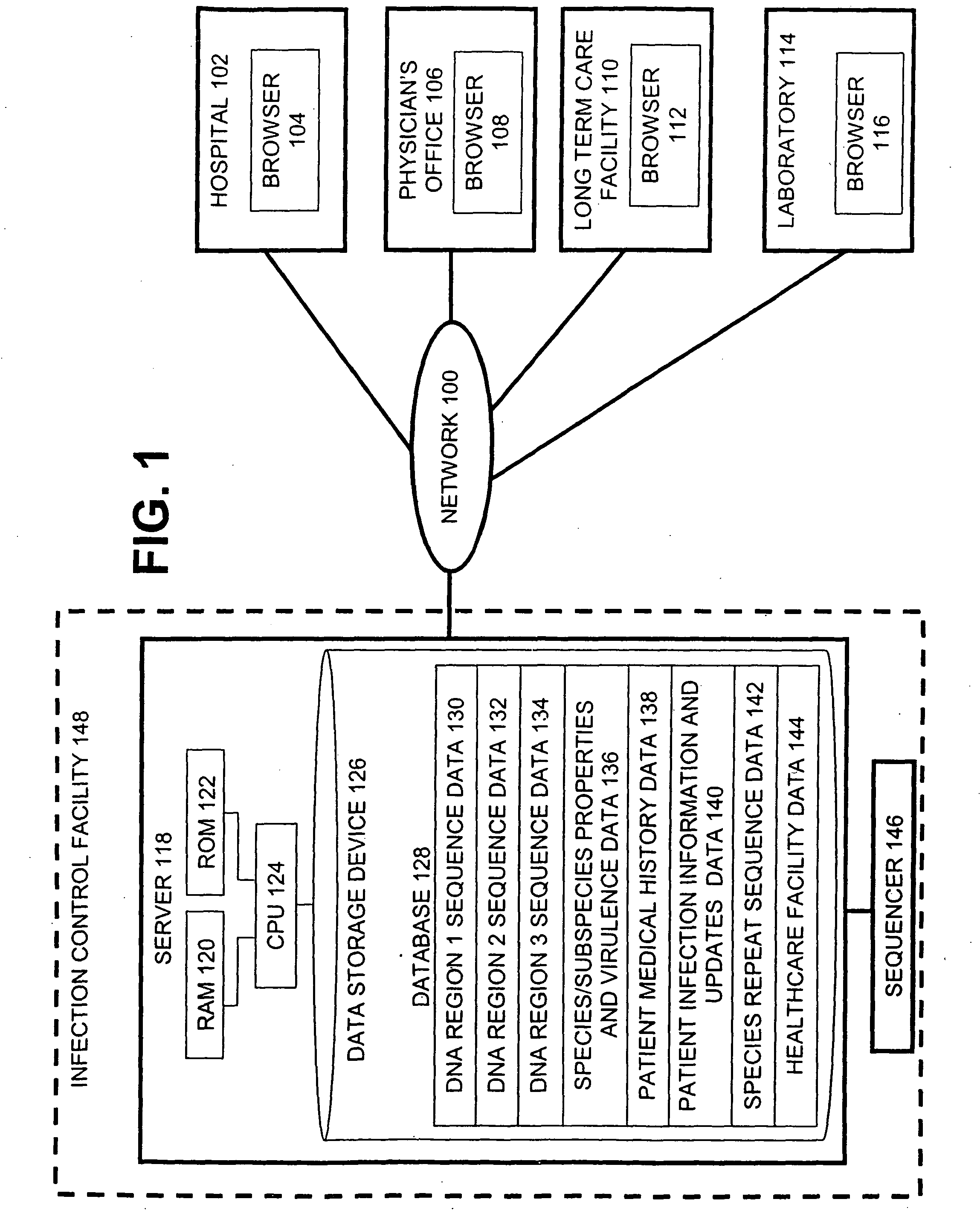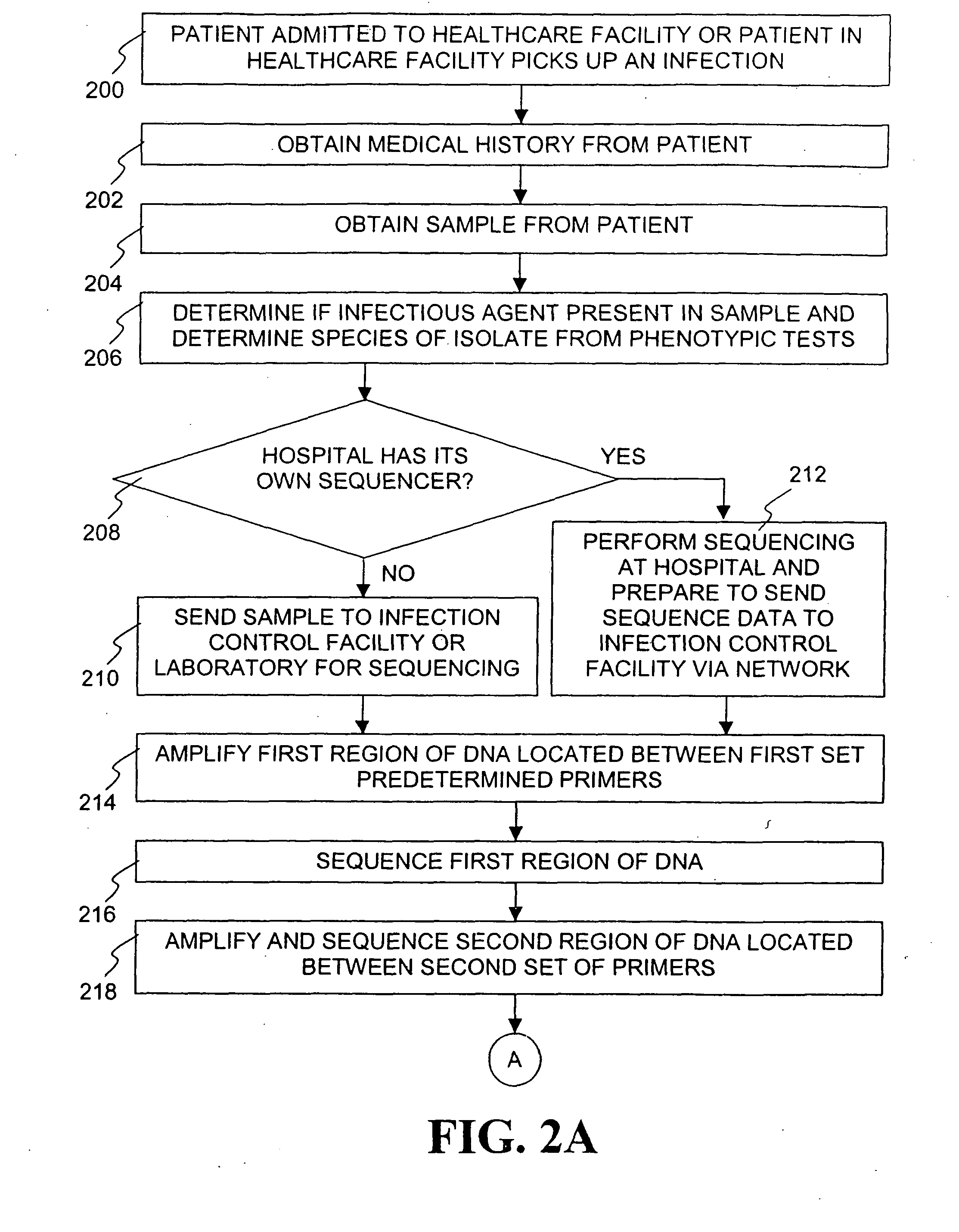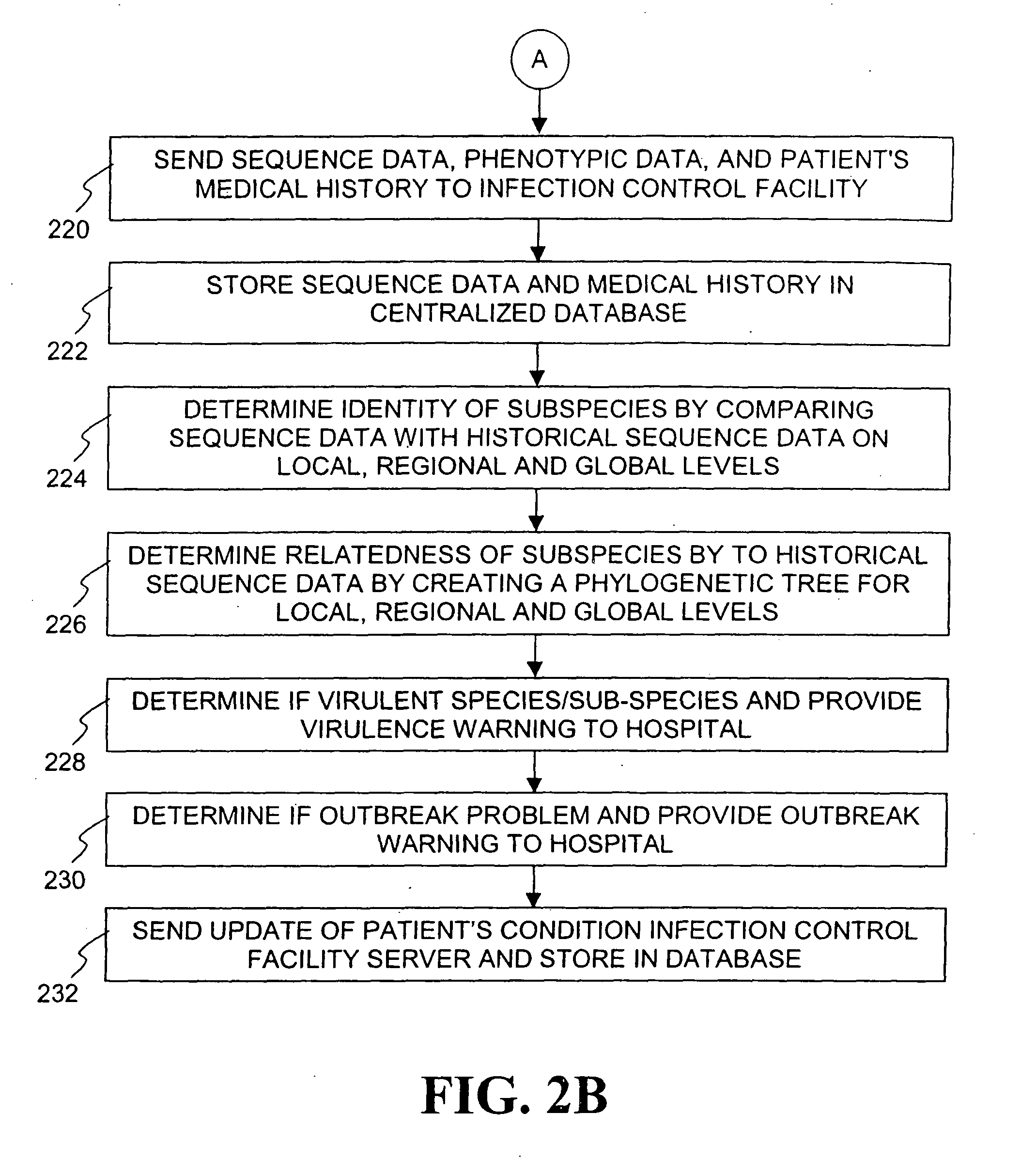System and method for tracking and controlling infections
a technology of infection tracking and control, applied in the field of system and method for tracking and controlling infections, can solve the problems of inability to infect others, difficulty in controlling the spread of infection, and the prevalence of hospital-acquired infections
- Summary
- Abstract
- Description
- Claims
- Application Information
AI Technical Summary
Benefits of technology
Problems solved by technology
Method used
Image
Examples
Embodiment Construction
[0044]The system and method of the present invention sequences one or more regions of the DNA of a microorganism and stores the DNA sequence data (A-T-C-G) in a centralized database. The DNA sequence data allows subspecies of the microorganism to be accurately identified and the relatedness with other subspecies can be effectively determined. Because the DNA sequence data is comprised of discrete units, as opposed to analog data, the DNA sequence data is highly portable and easily stored and analyzed in a relational database. Comparison of DNA sequence data between subspecies is objective, rapid and allows for accurate computer analysis. The system and method of the present invention can be applied to a variety of microorganisms and infectious agents such as bacteria, viruses and fungi. The system and method of the present invention is described below in more detail with respect to the figures.
[0045]FIG. 1 depicts a blocking diagram illustrating a system architecture suitable for im...
PUM
| Property | Measurement | Unit |
|---|---|---|
| physical | aaaaa | aaaaa |
| deoxyribonucleic acid sequence | aaaaa | aaaaa |
| physical location | aaaaa | aaaaa |
Abstract
Description
Claims
Application Information
 Login to View More
Login to View More - R&D
- Intellectual Property
- Life Sciences
- Materials
- Tech Scout
- Unparalleled Data Quality
- Higher Quality Content
- 60% Fewer Hallucinations
Browse by: Latest US Patents, China's latest patents, Technical Efficacy Thesaurus, Application Domain, Technology Topic, Popular Technical Reports.
© 2025 PatSnap. All rights reserved.Legal|Privacy policy|Modern Slavery Act Transparency Statement|Sitemap|About US| Contact US: help@patsnap.com



